
V1 “Flying bomb” AviationMuseum
V-1 Flying Bomb. The V-1 flying bomb or Vergeltungswaffen-1 ("Vengeance Weapon 1") as it was known by the Germans, was the world's first successful and practical cruise missile. While the V-1's time in the war was short-lived, the technology used was very important and help further the development of the missiles and aviation of today.

Flying Bomb V1 in het bos 1944 Military pictures, Astronomy pictures, World war
The V-1 guidance system used a simple autopilot to regulate height and speed. A weighted pendulum system provided fore-and-aft attitude measurement to control pitch (damped by a gyromagnetic compass, which it also stabilized).
:max_bytes(150000):strip_icc()/v-1-large-56a61bd33df78cf7728b61a8.jpg)
V1 Flying Bomb in World War II
The V-1 flying bomb ( German: Vergeltungswaffe 1 "Vengeance Weapon 1") was an early cruise missile. Its official Reich Aviation Ministry ( RLM) designation was Fi 103. It was also known to the Allies as the buzz bomb or doodlebug and in Germany as Kirschkern ( cherry stone) or Maikäfer ( maybug ). The V-1 was the first of the Vergeltungswaffen.
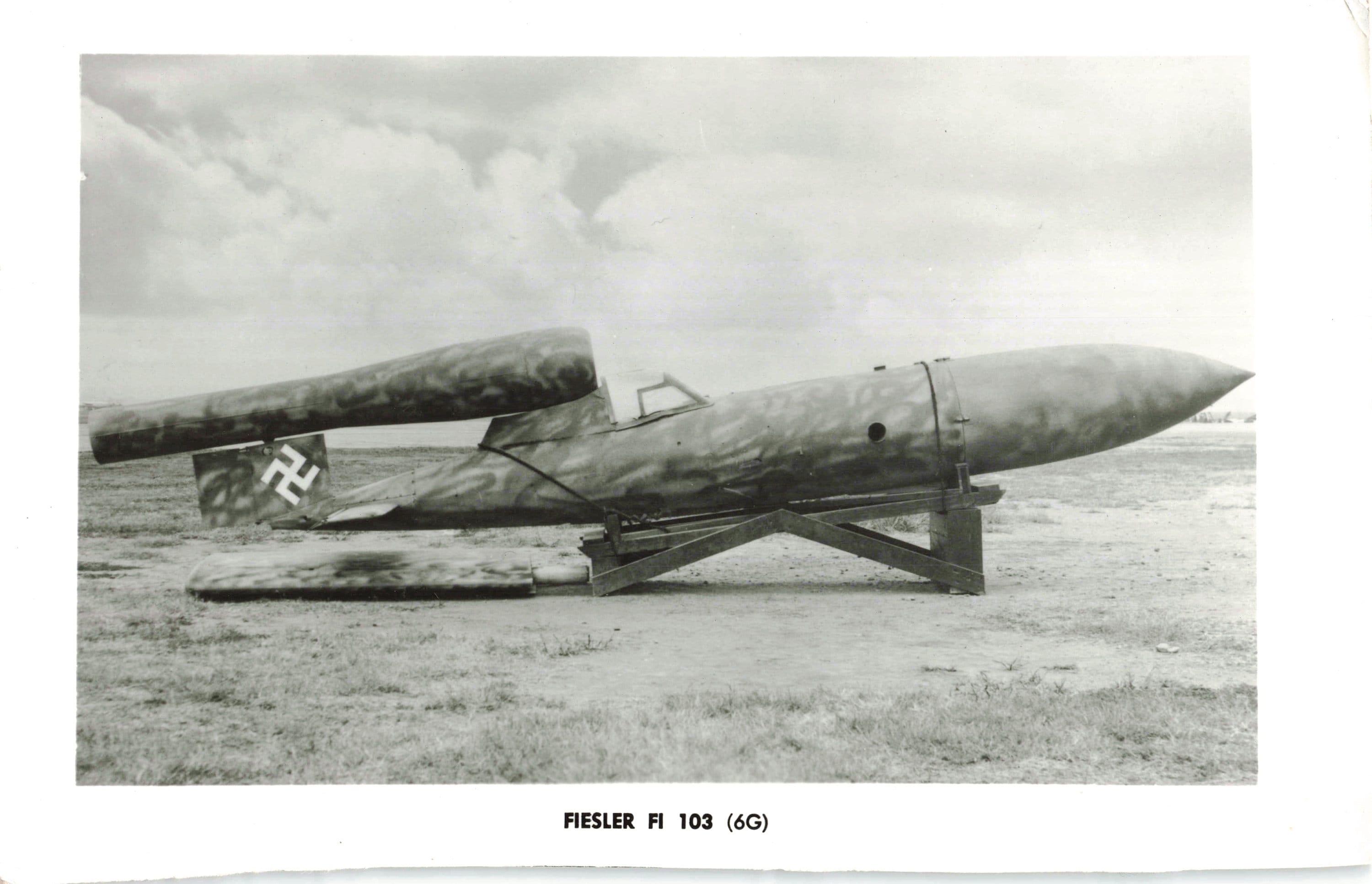
Fieseler Fi 103R Reichenberg German V1 Flying Bomb Military Etsy
Each V1 carried a high explosive warhead weighing up to 1,700 lbs. (850 kg) for a range of up to 150 miles (240 km). (Image credit: Mark Donoghue @hangar7art) Archaeologists have discovered the.

V1 flying bomb. Stock Image C029/1814 Science Photo Library
Key Accomplishment(s) World's First Operational Cruise Missile Brief Description The German V-1 was the world's first operational cruise missile. Powered by a noisy pulsejet that earned it the nicknames of "buzz bomb" and "doodle bug," more than 20,000 were launched at British and continental targets from June 1944 to March 1945.
:max_bytes(150000):strip_icc()/Fieseler_Fi103_debajo_de_un_Heinkel_111-5c2d162b46e0fb00014d44d4.jpg)
V1 Flying Bomb in World War II
The V-1 flying bomb ( German: Vergeltungswaffe 1 "Vengeance Weapon 1" [a]) was an early cruise missile. Its official Reich Aviation Ministry ( RLM) designation was Fi 103 [3] and its suggestive name was Höllenhund ( hellhound ).
V1 Flying Bomb, nicknamed “Doodlebug” by the allies, at the Imperial War Museum, London r
V-1 flying bomb facilities To carry out the planned V-1 "flying bomb" attacks on the United Kingdom, Germany built a number of military installations including launching sites and depots. Some of the installations were huge concrete fortifications.
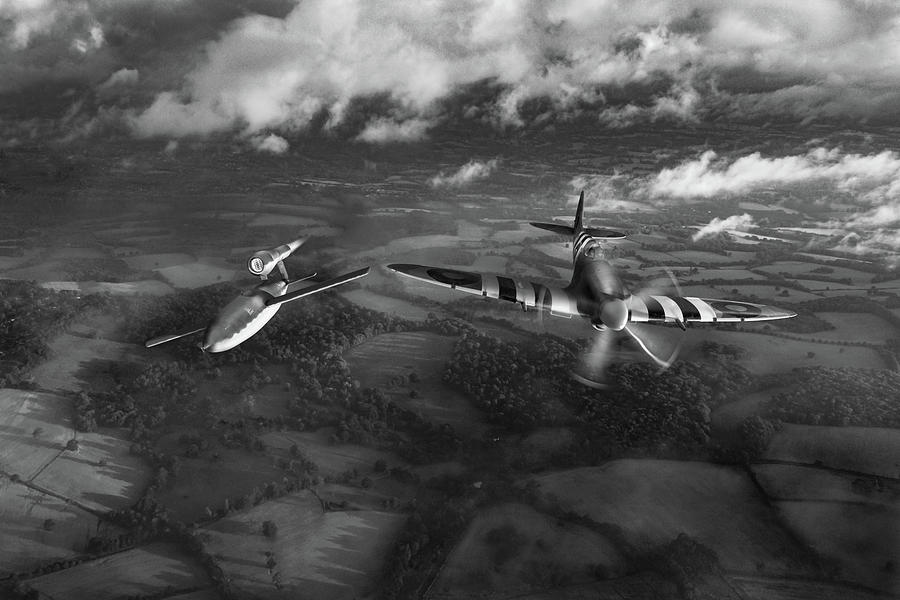
Spitfire tipping V1 flying bomb BW version Photograph by Gary Eason
In 1942, the Luftwaffe, aware of the development of a long-range rocket by the German army, began intensive development of a rival weapon, a ramjet Flying Bo.
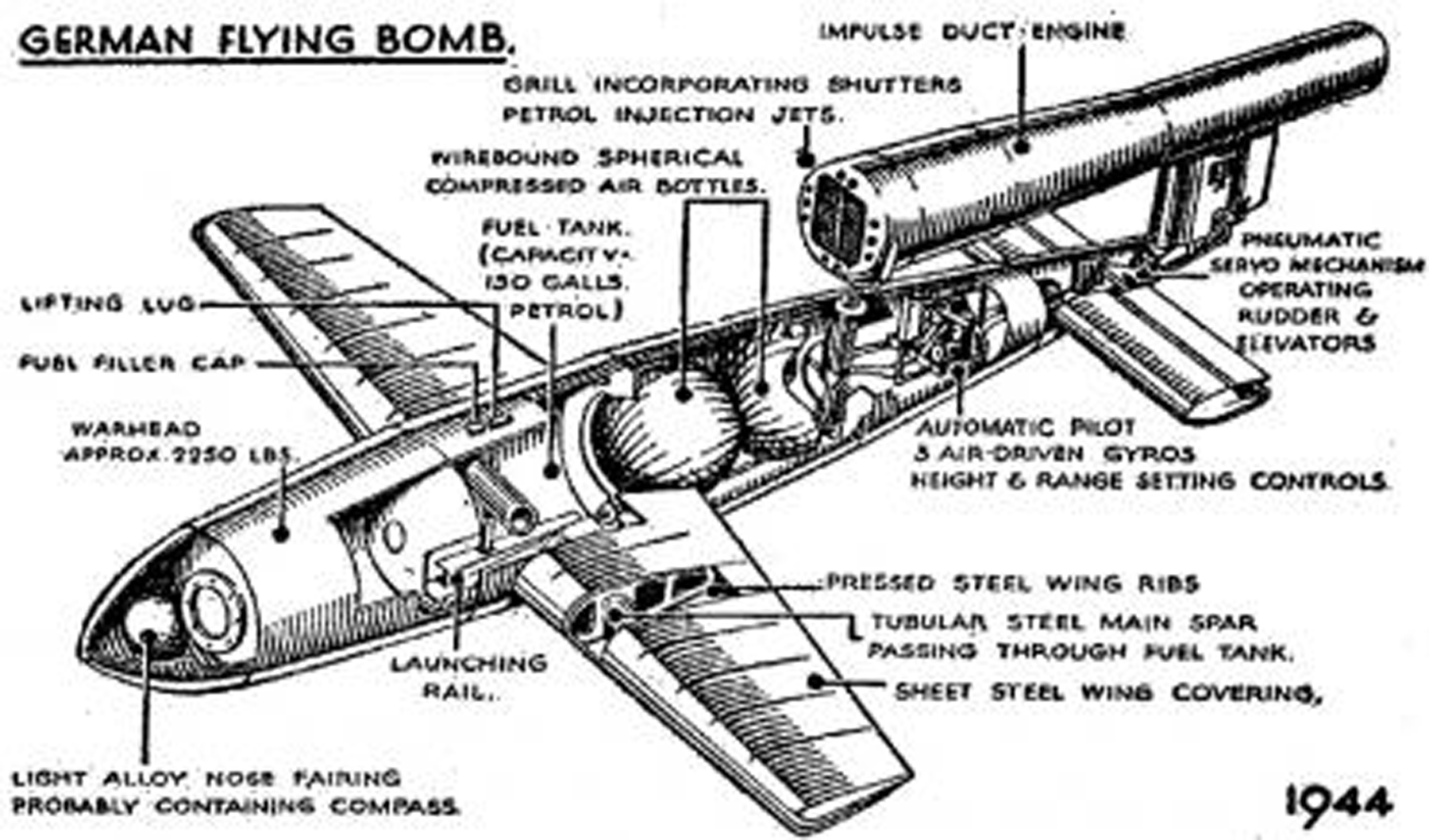
The V1 Flying Bomb Blog
11th June 2019 at 12:58pm A Royal Air Force Wing Commander has described how Second World War Spitfire pilots might have used their airborne skills to tip V1 Flying Bombs out of the sky to bring them down.
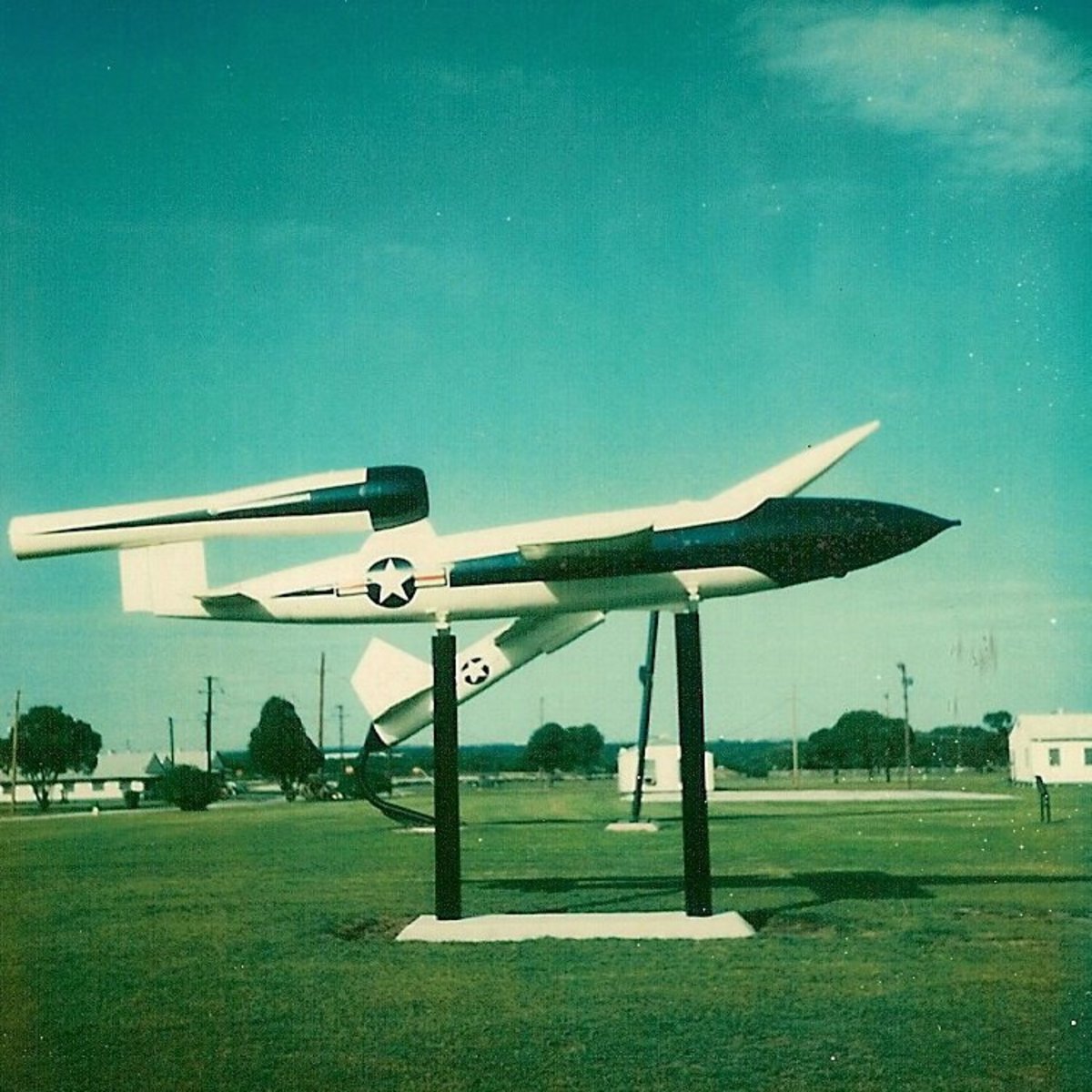
The V1 Flying Bomb The First Cruise Missile HubPages
A fearsome terror weapon The V1 Flying Bomb, also known as a 'buzz bomb' or 'doodlebug', was one of the most fear-inducing terror weapons of the Second World War. In the face of relentless Allied bombing of German cities, Hitler created its 'revenge weapons' (Vergeltungswaffen) in an attempt to terrorise British civilians and undermine morale.

A German World War Two V1 "Flying Bomb" doodlebug at the Eden Camp Museum, North Yorkshire Stock
In 1944, Nazi Germany launched the V1s against the UK. The V1 was a pilotless, jet-propelled flying bomb - the first of its kind in the world and a precursor to the modern cruise missile.

V1 Flying Bomb (Doodlebug) A genuine V1 flying bomb more c… Flickr
The Fieseler Fi 103R, code-named Reichenberg, was a German manned version of the V-1 flying bomb (more correctly known as the Fieseler Fi 103 ). It was developed towards the end of the Second World War and was intended to be used as a human-guided bomb in likely-suicidal attacks against the advancing Allies.

Flying Bomb V1 Op vliegveld 1944 Tweede wereldoorlog, Wereldoorlog, Vliegtuig
By Logan Nye Apr 29, 2020 1 minute read SUMMARY One week after D-Day, Germany began launching a new, secret weapon at London. The distinctive roar of V-1 flying bombs would slowly fill the air and then suddenly cut out, followed shortly by the massive explosion as a warhead went off. Dozens would…
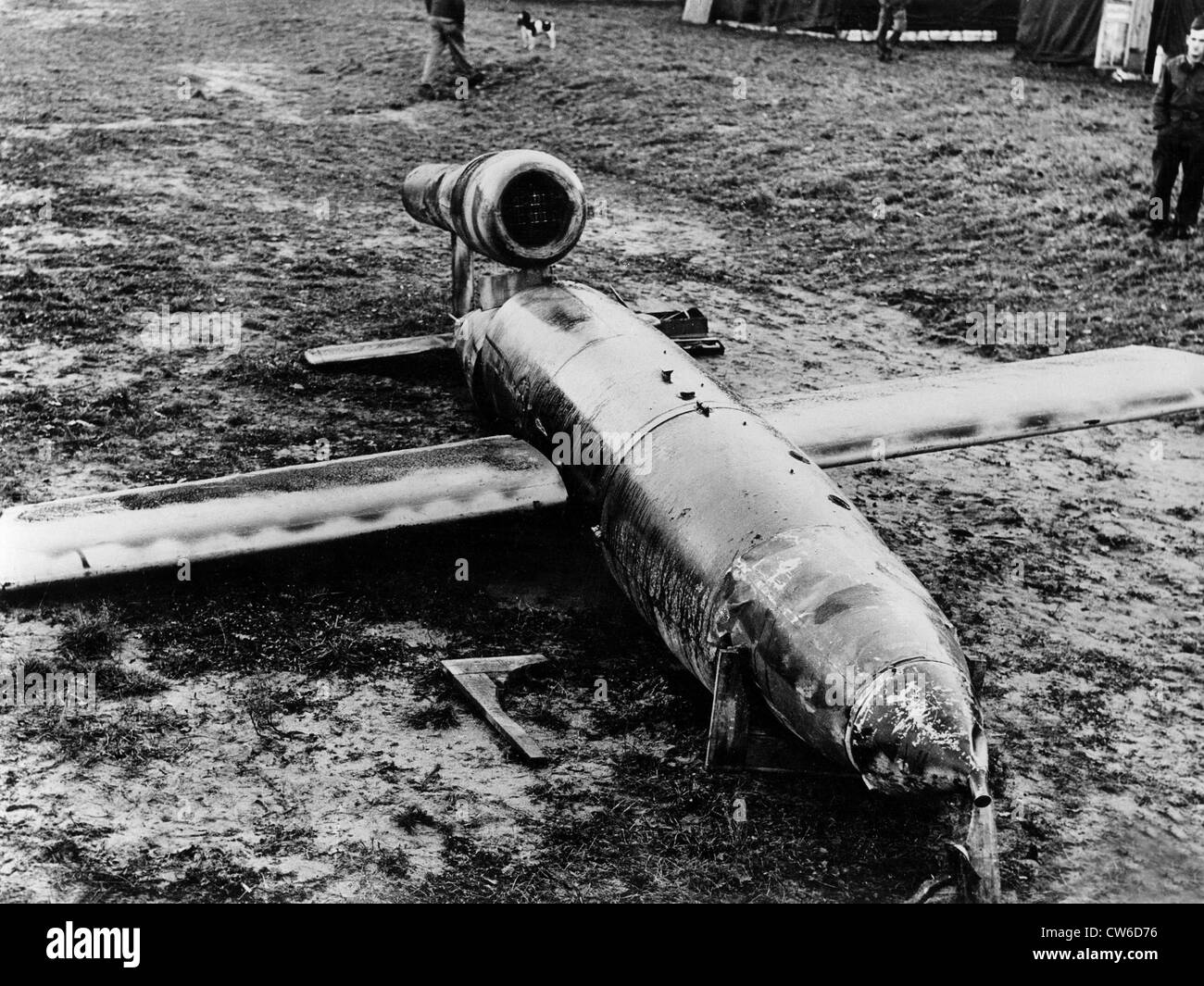
V 1 flying bomb hires stock photography and images Alamy
The V1 Flying Bomb, also known as a 'buzz bomb' or 'doodlebug', was one of the most fear-inducing terror weapons of the Second World War. In the face of rele.
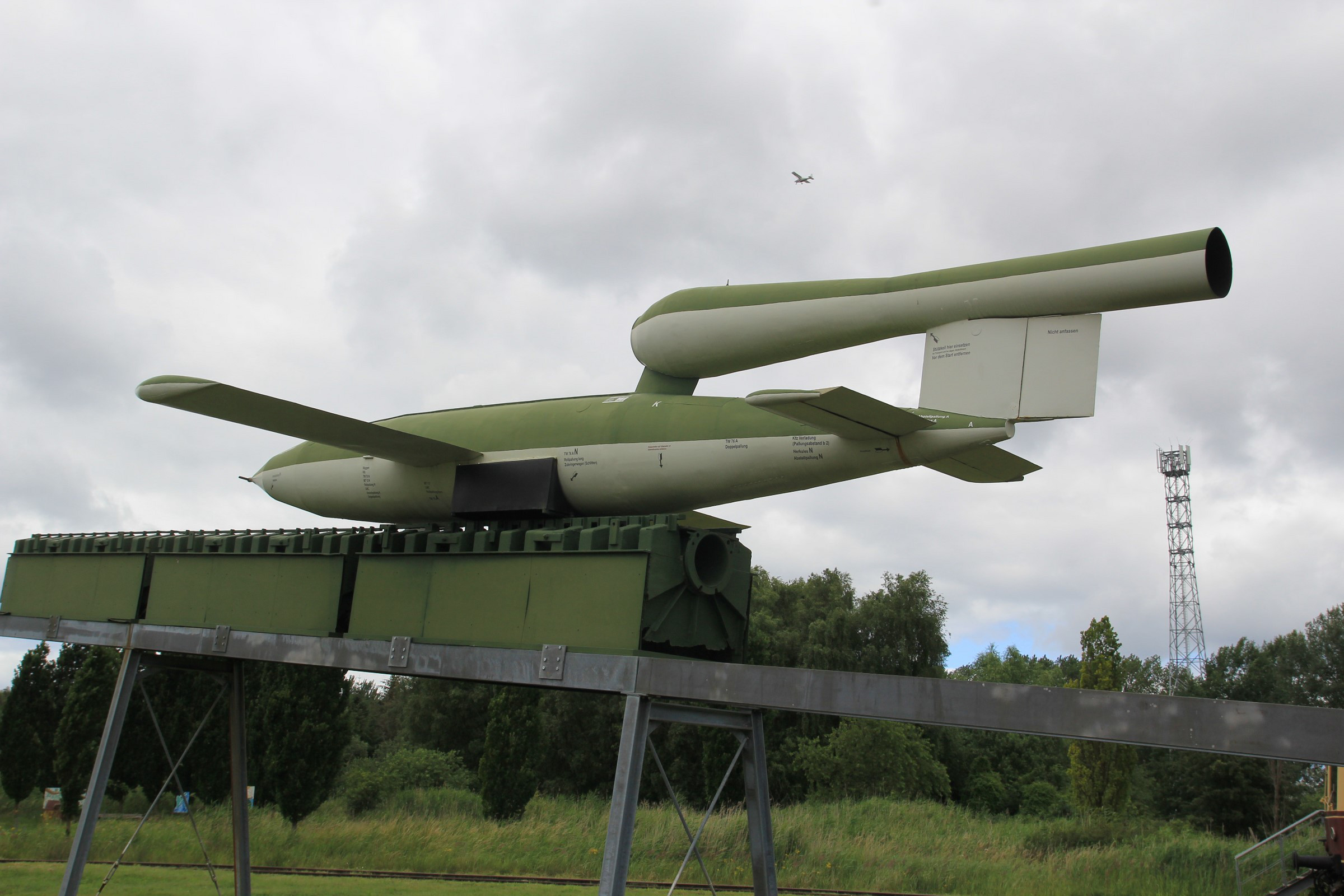
V1 Flying Bomb Photo
On the evening of Thursday, June 16th. 1944, our next duty day after the sighting of the first V1 flying bomb to reach London proper, we went to bed wondering about what "Sparrow" had told us.
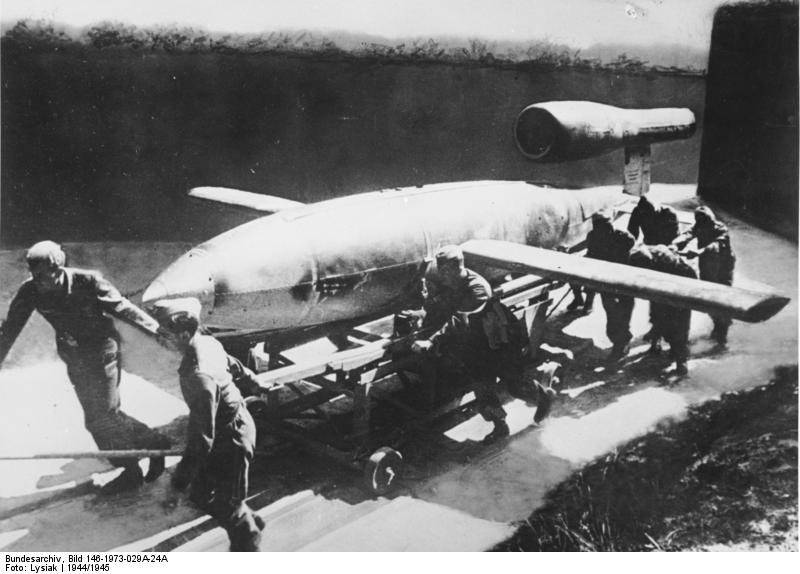
The V1 flying bomb All About History
The V-1 flying bomb was developed by Germany during World War II (1939-1945) as a vengeance weapon and was an early unguided cruise missile. Tested at Peenemünde-West facility, the V-1 was the only production aircraft to utilize a pulsejet for its power plant.